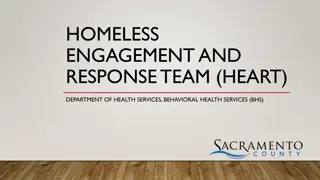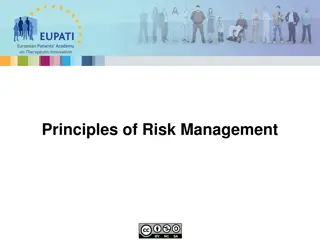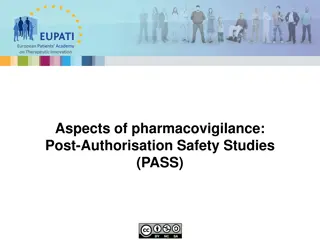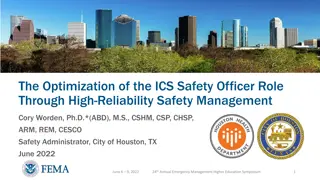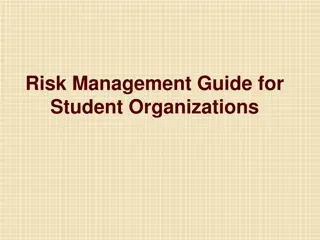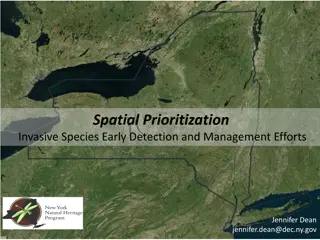Safety Focus Areas and Risk Management in Activities and Encampments
Addressing key safety focus areas such as allergies, food safety, slips, trips, falls, dehydration, and heat-related illnesses is crucial for ensuring participant well-being in various activities and encampments. Proper risk management planning, real-time assessment, and staff training are vital components to mitigate risks effectively.
Download Presentation

Please find below an Image/Link to download the presentation.
The content on the website is provided AS IS for your information and personal use only. It may not be sold, licensed, or shared on other websites without obtaining consent from the author.If you encounter any issues during the download, it is possible that the publisher has removed the file from their server.
You are allowed to download the files provided on this website for personal or commercial use, subject to the condition that they are used lawfully. All files are the property of their respective owners.
The content on the website is provided AS IS for your information and personal use only. It may not be sold, licensed, or shared on other websites without obtaining consent from the author.
E N D
Presentation Transcript
2023 Safety Focus Areas Activities and Encampments
Allergies and Food Safety Required Topics & Top Areas for Improvement Heat- related Illnesses Slips, Trips, and Falls 2
Known pre-existing conditions Food allergies / dietary restrictions can be life- threatening without proper handling EXTREMELY HIGH INITIAL RISK Activity Directors, Encampment Commanders, and Safety Officers are responsible for planning for known allergies Risk Management Planning It is IMPERATIVE food safety be included in the risk management plan, including effective mitigation and supervision #1. Allergies and Food Safety Risk Transfer food vendors MUST be made aware of known allergies and MUST be able to accommodate CAPF 160(I): CAP Member Health History MUST be reviewed and included in risk management planning Real-time Risk Management NEVER ignore information provided by participants about their allergies or other pre- existing conditions NEVER ignore feedback provided by a participant about possible food-related hazards 3
Uneven Surfaces Walking/running leading to sprains or falling Slow down and keep Eyes on the path Evaluate surfaces, mark hazards Weather related conditions Snow, ice Proper footwear Clear walking surfaces Footwear Impact, compression, and puncture are the most common types of foot injury. #2. Slips, Trips, and Falls Adequate ankle/foot support for surface, type of activity Proper tread, sole (slippery conditions) Clutter/Housekeeping Cords/cables Furniture/equipment location Wrinkled carpet, loose/unsecured area rugs/mats Keep walking areas clear; secure cords/cables; secure rugs/mats Obstructed View Walking while carrying objects that are difficult to see over 4
Dehydration Water provision/availability Regular breaks and reminders to hydrate Pre-existing conditions, medications can exacerbate effects Loss of Consciousness Inadequate hydration/nutrition #3. Heat-Related Illness Standing for long periods Pre-existing conditions, medications (blood pressure, diabetes, etc.) Can result in serious injuries (concussion, other head wounds) Other things to consider Schedule outdoor / high-exertion activities in the cooler parts of the day Encourage participants to speak up sooner if they experience early signs of illness 5
Risk Management Planning Activity (Safety) Staffing Pre-existing Conditions Recommended Additional Topics Real-time Risk Management After Action Reviews 6
Planning Include all sub-activities in risk assessment (sports, food service, transportation, etc.) Conduct assessment throughout planning process (vs. all at the end) Assign roles to mitigation supervision Staffing Safety officer requirements acquire a trained safety officer at the beginning of the process The activity SE should have either previously served as an activity SE or possess a Technician level in the Safety Specialty track. Activity Safety Risk Management Ensure adequate adult participation to address mitigation supervision responsibility Real-time Risk Management Daily briefings on safety hazards, expectations of participants Go/No-Go thresholds based on adequate mitigation/supervision needs After-Action Reviews What worked? What happened that wasn t expected? How did the unexpected get addressed? 7
Can the risk be mitigated to the lowest acceptable level, especially when things don't go as expected? If not, what modifications are necessary to ensure adequate risk management? Are there enough participants to support adequate risk mitigation? If not, what modifications are necessary, so members are not exposed to unnecessary risk? Activity Go/No go Decision-making Are the right resources available to support the activity (food service, health services, etc.)? If not, are there other options available? "Doing the best we can with what we have" may be exposing members to unnecessary - and unacceptable - risk. 8
Pre-existing Conditions Common sense goes a long way toward preventing most personal injuries. Be sure to consider any pre-existing conditions and exercise good safety judgment by knowing what you re capable of and staying within the bounds of your limitations. 9







